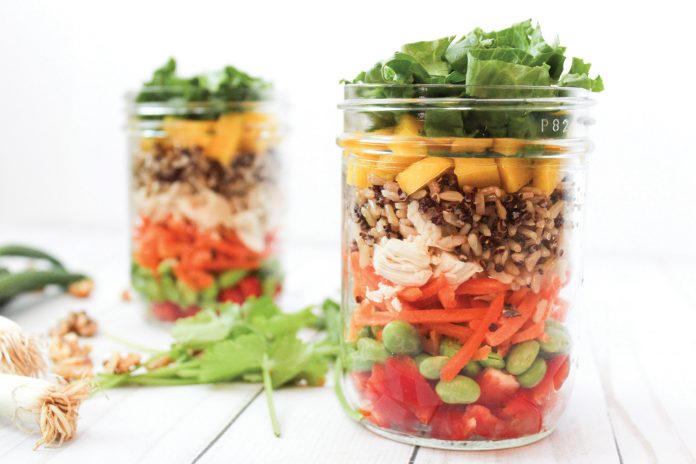By United Supermarkets Dietitian Team
United Supermarkets’ Lifestyle Desk
March was National Nutrition Month! This year’s theme was “Celebrate a World of Flavors!” With the ever-changing pandemic, world travel may not be your highest priority right now. The good news is that you don’t need to leave the country to experience new foods and cultures! The U.S. is such a melting pot of cultures that there is a variety of different cultures and cuisines out there for you to experience.
National Nutrition Month
Every year in March, the Academy of Nutrition and Dietetics celebrates National Nutrition Month! The purpose of National Nutrition Month is to put a focus on healthful eating. Around the country, dietitians bring a focus to making informed food decisions and developing healthy eating habits that will last a lifetime.
A World of Flavor
What is the message behind this year’s Nutrition Month theme? It’s like it sounds, to celebrate a world of flavors! This means to embrace global cultures, cuisines, and inclusivity. This month, every culture has a place at the table as we explore the foods and cultures from around the world. Furthermore, this month is about helping people choose healthier food options while remaining rooted to their culture and cuisine. This month (and every day), dietitians help clients fine-tune traditional recipes, provide alternative cooking methods and other healthful advice for incorporating family-favorite foods into everyday meals. You don’t have to let go of your culture and heritage in order to live a life of wellness!
How Can You Celebrate?
To celebrate National Nutrition Month, use this month to explore new flavors and cuisines! For example, explore the flavors of Korea with gochujang, kimchi, and bibimbap! Gochujang is a fermented chili paste that is often used in various dishes in Korean culture. Gochujang is spicy, with an almost sweet flavor, and it adds depth to any dish. Kimchi is a side dish used in Korean Culture. It is made most often with fermented Napa cabbage that has been seasoned with gochujang. Finally, bibimbap is a common dish in Korea that consists of white rice with a variety of vegetables, such as seaweed salad, bean sprouts, and carrots, along with beef. Bibimbap is often topped with gochujang as well, along with kimchi. A fried egg is even added depending on a person’s preference.
Across the sea, Japan also has many different traditional foods and flavors. One that you are probably familiar with is soy sauce. Soy sauce is made with fermented soybeans and wheat. Soy sauce can be eaten on top of sushi, rice, or noodles, as well as added to soups and stocks. Another common food eaten in Japan is miso soup. Miso soup is actually a breakfast food in Japan! Miso is a paste made of fermented soybeans, and the paste is often made into a broth. Foods like tofu, green onions, and seaweed can be added to the soup. Finally, sushi is probably one of the first foods that comes to your mind when thinking of Japan. Rice and seaweed is wrapped around various fish and vegetables and then topped with different toppings to make sushi rolls. Sushi is a delicious meal that doesn’t feel too heavy on the stomach!
Finally, expand your taste buds with different foods from Indian cuisine, such as butter chicken, palak paneer, and naan. Butter chicken is a delicious curry of chicken in spiced tomato and butter sauce. Palak paneer is a spinach curry with fresh-pressed cheese. Naan is a baked flatbread that is a staple in Indian cuisine and is often featured alongside most dishes in the culture.
Depending on where you live, there may be a variety of different cultural restaurants available to you. Step out of your comfort zone this month and try a different type of food that you’ve never had while supporting businesses around you! Or spend some quality family time in the kitchen while experimenting with new recipes and foods! Use this month to explore new cultures and cuisines. You might find a new favorite!
Thai Chicken Quinoa Jar Salad
Ingredients
1/8 cup Shredded carrots
1/8 cup Edamame
1/8 cup Lettuce
1 Tbsp. walnuts
1/8 cup mango
1/8 cup Red pepper, diced
1/8 cup 1 minute quinoa and brown rice
2 oz Chicken, shredded
2 Tbsp. Peanut Dressing of choice
For garnish use: Cilantro, Green onion
Directions
1. Chop lettuce, walnuts
2. Dice mango, red pepper
3. Cook quinoa according to package directions
4. Place peanut dressing on bottom of jar
5. Layer ingredients in the following order: red bell pepper, edamame, shredded carrots, chicken, purple cabbage, quinoa, lettuce, mango, green onion, cashews, cilantro.
6. When you’re ready to serve turn the jar upside down to allow the dressing to flood the ingredients if you want to eat the salad in a jar. Or pour into a bowl and enjoy!




